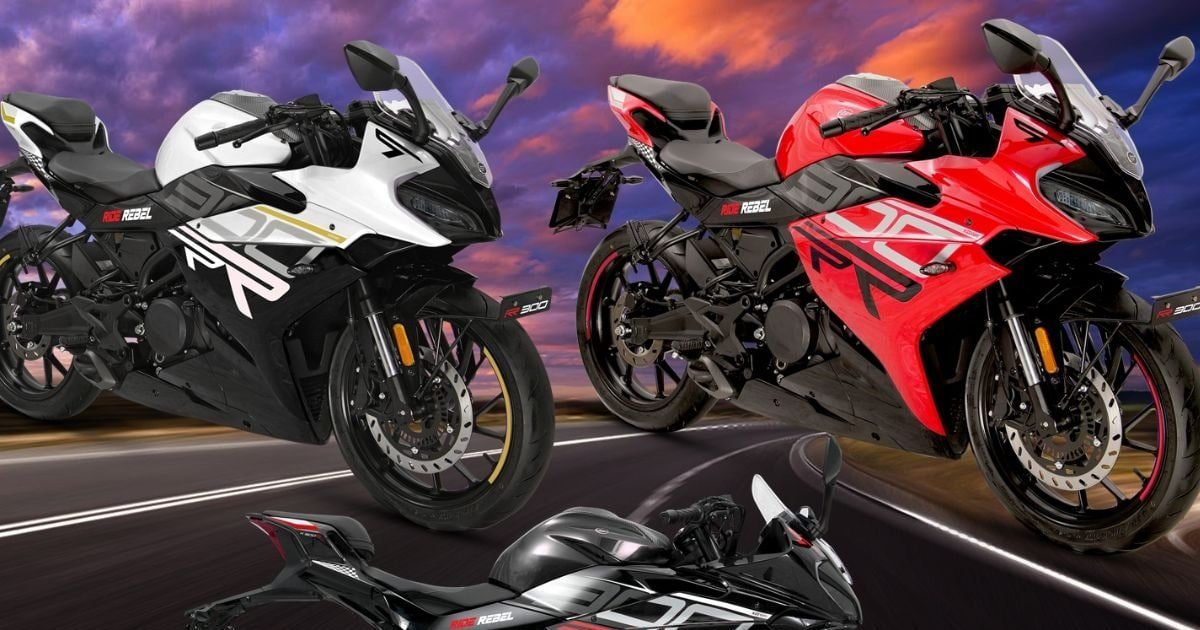GST cut on two-wheelers ‘a tactical hit but a strategic miss,’ says Rajiv Bajaj

However, he raised concerns about the decision to impose a higher 40% GST slab on motorcycles above 350cc. Bajaj pointed out that this category, though small in volume, is significant in value and strategic importance. “This is just 2% of the industry, but in terms of volume, it’s getting closer to 200,000 motorcycles per year,” he said. According to him, this segment is vital for brand image, global competitiveness, and long-term product innovation.
The new tax structure, he warned, could lead manufacturers to deprioritise the segment altogether. “I anticipate that in a few months’ time, we will realign most, if not all, of our portfolio to under 350cc… The 350cc+ segment will be practically insignificant in India,” Bajaj said.He argued that this could hurt India’s ability to scale globally in the high-performance motorcycle segment, where local companies like Bajaj and Royal Enfield have already made inroads. “Nobody wins… the consumer loses, the manufacturer loses, and certainly the government loses when there is no volume to be multiplied by that 40% figure,” he added.
The government has revised GST rates for vehicles and auto parts to boost demand in the automobile sector. The Compensation Cess has been removed, making many vehicles more affordable.

The 12% and 28% GST slabs have been scrapped. The 5% and 18% slabs remain, and a new 40% slab has been added for luxury and high-end goods.
Bajaj emphasised that this could limit the development and domestic scaling of premium bikes, pushing manufacturers to focus future launches on models under 350cc, potentially stunting growth for larger-displacement motorcycles despite strong global demand.

This is the edited transcript of the interview.
Q: A big GST relief so to say for the commuter segment, do you believe this is going to give a festive boost to the auto sector now that there is clarity that all these changes will come into effect on the September 22?
A: Yes, absolutely, in a word, definitely. This has been long in coming, I would say, and it’s a fabulous change, and it’s great timing, so it’s wonderful,
Q: Does this also help in creating demand for two-wheelers on a sustained basis?
A: That is really the more important part, because season is anyway peak time, and most of us are anywhere up to capacity at this time so what, what’s really important is what happens after that from November onwards. November, December are usually the weakest months of the year, but that will not be the case this time. More importantly, the two-wheeler industry that never really recovered post-COVID. Finally, will now head to a new high.
Q: Are you now going to be ramping up your production in anticipation of a strong festive season?
A: Production is already planned to be ramped up this month, obviously, to stock up for the season, because the season starts towards the end of the month, and in October, due to the vacations, we all have fewer working days. So, this will be the biggest month of the year, I am sure, for everyone of this financial year, and so also for Bajaj Auto.
Q: Does this also help three-wheelers and commercial vehicle sales, are you looking at a strong uptick?
A: Yes, absolutely. It will equally help three-wheelers and obviously that’s really important to us, because we are now just in the domestic market, clocking in excess of 40,000 three-wheelers every month, ICE and electric vehicle (EV) included, with about 80% share, so that that is very meaningful to us.
Q: Downside for the segment above 350CC?
A: If I have to summarise what’s happened for the two-wheeler industry, say it’s a tactical hit. This GST reduction is a tactical hit, but it’s a strategic miss. It’s a tactical hit because, obviously a big fillip for, let us say, almost 98% of the domestic industry, with this significant reduction in GST.
But at the same time, the 350cc plus motorcycles where Royal Enfield and Bajaj are the biggest players this is, on the one hand, just 1% of industry, perhaps about 4% by value. For Bajaj, I can tell you, this is about 3% by volume and about 7% by value. It would perhaps be a little more for Royal Enfield, because they are the leader in this market. So, both Siddhartha Lal and I had appealed to those concerned that this is just 2% of the industry, and let us have a uniform rate from a strategic point of view.
Because although it may sound like 2% but in terms of volume, it is getting closer to 200,000 motorcycles per year. Now that is not small when you consider that the global volume for such products is well under a million. So here you have two Indian OEMs with a very significant global footprint. In our case, almost half of what we make is exported. And if this rate had been applied uniformly, it would have further helped us to scale up in this 350cc plus segment, which is very important for the future, because it’s great for your brand image. It’s great for the bottom line. With the scale that we would have got here, or more specifically, our supply chain partners would have got here, we would have been in a very cost competitive position to take our brand and our products overseas.
There I can tell you, in recent times, the Chinese are making very, very significant inroads at the expense of American. And European brands the same as what’s happening in cars. So, in that sense, I would say this is a strategic miss, because I anticipate that in a few months’ time, we will realign most, if not all, of our portfolio to under 350cc, which means this segment will be practically dead.
The 350cc plus segment will be practically insignificant in India. And I don’t think that is good for the long term, because OEMs will find it very difficult to develop products solely for export market, when the domestic market doesn’t support it. So I think that’s unfortunate. And frankly nobody wins. Everybody loses here, the consumer loses, the manufacturer loses, and certainly the government loses when there is no volume to be multiplied by that 40% figure.
Q: Does this mean that, as you said, your portfolio, would now get aligned to bikes equal to a less than 350cc? Are we going to see more future launches under 350cc?
A: I think it’s inevitable, because I think let us look at it like this, the single cylinder motorcycles that are over 350cc are typically up to 450cc. Most, if not all, will get realigned over the next few months to under 350cc by appropriate engine development. Twin cylinder motorcycles or multi cylinder motorcycles that are bigger than that, obviously will remain in the higher space, but those volumes are tiny and minuscule, and therefore, yes, even new, new developments will be largely restricted to under 350cc.
Q: How do you think this will lead to an uptick for two-wheeler sales overall? I am speaking about Bajaj Auto, and then please tell us about the industry as well?
A: Both for Bajaj and industry, this will have enormously salutary effect. It is bound to, I mean, it’s anybody’s guess what that number would be. So quantitatively, I will be able to put a number on it, but I would certainly say qualitatively that this will really lift sentiments. That’s the single most important ingredient when it comes to purchasing decisions for such high value durables or goods. And definitely, I would expect the industry to go well past its pre-COVID highs. So all in all, as I said, a tactical hit, but unfortunately, also a strategic miss.
Q: My final question to you would be, overall, how do you see this GST rate rationalisation exercise boosting sentiments in the economy?
A: I think it’s excellent. I mean, all the feedback is outstanding from across peers, from across sectors, across industry. In my discussions with some of the people in Delhi, I am also encouraged to hear that this is not the end. In a few years’ time, we can expect further rationalisation, and perhaps one day, you know, India will head to that golden single digit, I mean single number, GST, which would be wonderful. Because, as I have been saying to you, that in the major global two-wheeler markets of the world, the equivalent of GST is still between 8% and 14% a average of, let us say, 12% so there is certainly, in my view some distance to go before we put the Indian consumer on par with his global counterparts.
Follow all the real-time updates from the GST Council meeting here
Discover more from News Hub
Subscribe to get the latest posts sent to your email.







